Medications for daytime sleepiness in individuals with idiopathic hypersomnia
- PMID: 34031871
- PMCID: PMC8144933
- DOI: 10.1002/14651858.CD012714.pub2
Medications for daytime sleepiness in individuals with idiopathic hypersomnia
Abstract
Background: Idiopathic hypersomnia is a disorder of excessive daytime sleepiness, often accompanied by long sleep times or pronounced difficulty in awakening, in the absence of a known cause. The optimal treatment strategy for idiopathic hypersomnia is currently unknown.
Objectives: To assess the effects of medications for daytime sleepiness and related symptoms in individuals with idiopathic hypersomnia and, in particular, whether medications may: 1. reduce subjective measures of sleepiness; 2. reduce objective measures of sleepiness; 3. reduce symptoms of cognitive dysfunction; 4. improve quality of life; and 5. be associated with adverse events.
Search methods: We searched the following databases on 4 February 2021: Cochrane Register of Studies (CRS Web), MEDLINE (Ovid, 1946 to 1 February 2021), and reference lists of articles. CRS Web includes randomized or quasi-randomized controlled trials from PubMed, Embase, ClinicalTrials.gov, the World Health Organization International Clinical Trials Registry Platform (WHO ICTRP), the Cochrane Central Register of Controlled Trials (CENTRAL), and the specialized registers of Cochrane Review Groups, including the Cochrane Epilepsy Group. We previously searched the WHO ICTRP separately when loading of ICTRP records into CRS Web was temporarily suspended.
Selection criteria: Randomized studies comparing any medication to placebo, another medication, or a behavioral intervention.
Data collection and analysis: Two review authors independently extracted data and assessed trial quality. We contacted study authors for additional data. We collected data on adverse events from the included trials.
Main results: We included three trials, with a total of 112 participants. Risk of bias was low for the included studies. Two pharmaceutical company-sponsored trials compared modafinil with placebo, involving 102 participants, nearly all of whom had idiopathic hypersomnia without long sleep time. Modafinil significantly improved self-reported sleepiness on the Epworth Sleepiness Scale by 5.08 points more than placebo (95% confidence interval (CI) 3.01 to 7.16; 2 studies, 101 participants; high-certainty evidence). Modafinil also significantly improved disease severity on the Clinical Global Impression of Severity scale by 1.02 points (95% CI 0.11 to 1.93; 1 study, 30 participants; moderate-certainty evidence) and resulted in a greater proportion of participants who were "much improved" or "very much improved" on the Clinical Global Impression of Change (odds ratio (OR) for improvement 5.14, 95% CI 1.76 to 15.00; 1 study, 70 participants; moderate-certainty evidence). Ability to remain awake on the Maintenance of Wakefulness Test was significantly improved with modafinil, by 4.74 minutes more than with placebo (95% CI 2.46 to 7.01; 2 studies, 99 participants; high-certainty evidence). Ratings of exhaustion and effectiveness/performance were improved with modafinil compared to placebo in one study. Number of naps per week was no different between modafinil and placebo across two studies. Participants receiving modafinil experienced more side effects, although the difference did not reach statistical significance (OR 1.68, 95% CI 0.28 to 9.94; 2 studies, 102 participants; low-certainty evidence). One trial studying 20 participants with different disorders of sleepiness included 10 participants with idiopathic hypersomnia, with or without long sleep time, and compared clarithromycin to placebo. We only included the subset of trial data for those participants with idiopathic hypersomnia, per our protocol. There were no significant differences between clarithromycin and placebo for the Epworth Sleepiness Scale, psychomotor vigilance testing, sleep inertia, other subjective ratings, or side effects.
Authors' conclusions: Modafinil is effective for the treatment of several aspects of idiopathic hypersomnia symptomatology, based on studies predominantly including participants with idiopathic hypersomnia without long sleep times, with low risk of bias, and evidence certainty ranging from high to low. There is insufficient evidence to conclude whether clarithromycin is effective for the treatment of idiopathic hypersomnia. There is a clear need for additional studies testing interventions for the treatment of idiopathic hypersomnia.
Trial registration: ClinicalTrials.gov NCT01146600.
Copyright © 2021 The Cochrane Collaboration. Published by John Wiley & Sons, Ltd.
Conflict of interest statement
LT: has performed clinical trials of medications used for daytime sleepiness in idiopathic hypersomnia, including one study included in this review (Trotti 2015). Her institution has received funding for clinical trials of medications for daytime sleepiness (Jazz Pharmaceuticals, Balance Therapeutics). She currently receives grant support from the National Institutes of Health and the American Academy of Sleep Medicine Foundation for clinical trials evaluating medications for the treatment of daytime sleepiness in idiopathic hypersomnia and related disorders (NCT03772314; NCT04026958).
LB: none known.
CM: none known.
RH: was the site Principal Investigator of a clinical trial of a medication for daytime sleepiness in idiopathic hypersomnia (NCT02512588).
Figures
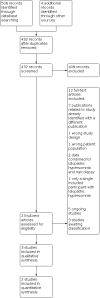
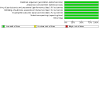
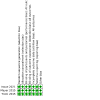
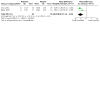
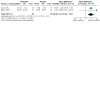
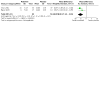
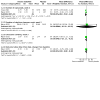
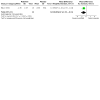
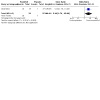
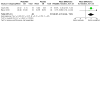
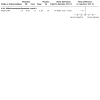
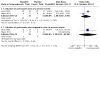
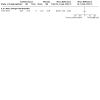
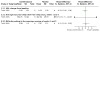
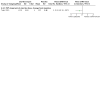
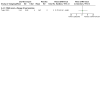
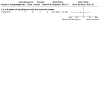
Update of
References
References to studies included in this review
Inoue 2021 {published data only (unpublished sought but not used)}
-
- Inoue Y, Tabata T, Tsukimori N. Efficacy and safety of modafinil in patients with idiopathic hypersomnia without long sleep time: a multicenter, randomized, double-blind, placebo-controlled, parallel-group comparison study. Sleep Medicine (in press). [DOI: 10.1016/j.sleep.2021.01.018] - DOI - PubMed
Mayer 2015 {published and unpublished data}
References to studies excluded from this review
JapicCTI‐142615 {published data only}
-
- JapicCTI-142615. Long-term study of CN-801 in patients with idiopathic hypersomnia. www.clinicaltrials.jp/user/showCteDetailE.jsp?japicId=JapicCTI-142615 (first received 23 July 2014).
NCT01183312 {published and unpublished data}
-
- NCT01183312. Flumazenil for the treatment of primary hypersomnia. clinicaltrials.gov/show/NCT01183312 (first received 17 August 2010).
Nodine 1960 {published data only}
-
- Nodine JH, Bodi T, Slap J, Levy HA, Siegler PE. Preliminary trial of a new stimulant SCH 5472 in ambulatory patients with depression, exhaustion, or hypersomnia syndrome. Antibiotic Medicine & Clinical Therapy 1960;7:771-6. [PMID: ] - PubMed
Philip 2014 {published data only (unpublished sought but not used)}
Sagaspe 2019 {published data only}
-
- Sagaspe P, Micoulaud-Franchi JA, Coste O, Leger D, Espie S, Davenne D, et al. Maintenance of wakefulness test, real and simulated driving in patients with narcolepsy/hypersomnia. Sleep Medicine 2019;55:1-5. - PubMed
References to studies awaiting assessment
EUCTR2017‐002127‐16 {published data only}
-
- EUCTR2017-002127-16. A phase IIa study of GR3027 in patients with idiopathic hypersomnia (IH) involving an open-label part to assess safety, tolerability and pharmacokinetics (PK) of a single oral GR3027 dose in female patients and a randomized, double-blind, placebo-controlled crossover study to assess safety, tolerability, exposure and exploratory efficacy of multiple oral doses of GR3027 in male and female IH patients. www.clinicaltrialsregister.eu/ctr-search/search?query=eudract_number:201... (first received 5 July 2017).
NCT02512588 {published data only}
-
- NCT02512588. A study of safety and efficacy of BTD-001 in treatment of patients with idiopathic hypersomnia (IH) or narcolepsy type 2. clinicaltrials.gov/show/NCT02512588 (first received 31 July 2015).
NCT03533114 {published data only}
-
- NCT03533114. A multicenter study of the efficacy and safety of JZP-258 in the treatment of idiopathic hypersomnia (IH) with an open-label safety extension. clinicaltrials.gov/show/NCT03533114 (first received 22 May 2018).
References to ongoing studies
NCT03542851 {published data only}
-
- NCT03542851. A randomized, placebo-controlled, double-blind, crossover study of oral BTD-001 in adults with idiopathic hypersomnia. clinicaltrials.gov/show/NCT03542851 (first received 31 May 2018).
NCT03597555 {published data only}
-
- NCT03597555. Sodium oxybate for idiopathic hypersomnia. clinicaltrials.gov/show/NCT03597555 (first received 24 July 2018).
NCT03772314 {published data only}
-
- NCT03772314. Modafinil versus amphetamines for the treatment of narcolepsy type 2 and idiopathic hypersomnia. clinicaltrials.gov/ct2/show/NCT03772314 (first received 11 December 2018).
NCT04026958 {published data only}
-
- NCT04026958. Clarithromycin mechanisms in hypersomnia syndromes. clinicaltrials.gov/ct2/show/NCT04026958.
NCT04091438 {published data only}
-
- NCT04091438. A phase 1b randomized, double-blind, placebo-controlled, crossover study of a single intravenous infusion dose of TAK-925 in patients With idiopathic hypersomnia. clinicaltrials.gov/ct2/show/NCT04091438.
Additional references
Ali 2009
Anderson 2007
Banerjee 2004
-
- Banerjee D, Vitiello MV, Grunstein RR. Pharmacotherapy for excessive daytime sleepiness. Sleep Medicine Review 2004;8(5):339–54. - PubMed
Bassetti 1997
-
- Bassetti C, Aldrich MS. Idiopathic hypersomnia: a series of 42 patients. Brain 1997;120:1423-35. - PubMed
Covidence [Computer program]
EMA Modafinil 2010
-
- European Medicines Agency. Modafinil. ww.ema.europa.eu/ema/index.jsp?curl=pages/medicines/human/referrals/Moda... (accessed 3 October 2016).
Gowda 2014
-
- Gowda CR, Lundt LP. Mechanism of action of narcolepsy medications. CNS Spectrums 2014;19:25-33. - PubMed
GRADEpro GDT [Computer program]
-
- McMaster University (developed by Evidence Prime) GRADEPro GDT. Hamilton (ON): McMaster University (developed by Evidence Prime), multiple access dates; most recent 3/8/21. Available at gradepro.org.
Heal 2014
-
- Heal DJ, Gosden J, Smith SL. Dopamine reuptake transporter (DAT) “inverse agonism”—a novel hypothesis to explain the enigmatic pharmacology of cocaine. Neuropharmacology 2014;87:19-40. - PubMed
Higgins 2011
-
- Higgins JPT , Altman DG, Sterne JAC (editors). Chapter 8: Assessing risk of bias in included studies. In: Cochrane Handbook for Systematic Reviews of Interventions Version 5.1.0 [updated March 2011]. Available from www.handbook.cochrane.org edition. The Cochrane Collaboration, 2011.
Higgins 2021
-
- Higgins JP, Thomas J, Chandler J, Cumpston M, Li T, Page MJ, Welch VA, editor(s). Cochrane Handbook for Systematic Reviews of Interventions Version 6.2 (updated February 2021). Cochrane, 2021. Available from training.cochrane.org/handbook. - PMC - PubMed
ICSD‐3 2014
Krahn 2015
Lefebvre 2021
-
- Lefebvre C, Glanville J, Briscoe S, Littlewood A, Marshall C, Metzendorf M-I, et al. Technical Supplement to Chapter 4: Searching for and selecting studies. In: Higgins JP, Thomas J, Chandler J, Cumpston M, Li T, Page MJ, Welch VA, editor(s). Cochrane Handbook for Systematic Reviews of Interventions Version 6.2 (updated February 2021). Cochrane, 2021. Available from training.cochrane.org/handbook.
Leu‐Semenescu 2014
-
- Leu-Semenescu S, Nittur N, Golmard JL, Arnulf I. Effects of pitolisant, a histamine H3 inverse agonist, in drug-resistant idiopathic and symptomatic hypersomnia: a chart review. Sleep Medicine 2014;15(6):681-7. - PubMed
Leu‐Semenescu 2016
-
- Leu-Semenescu S, Louis P, Arnulf I. Benefits and risk of sodium oxybate in idiopathic hypersomnia versus narcolepsy type 1: a chart review. Sleep Medicine 2016;17:38-44. - PubMed
Lu 2006
-
- Lu J, Greco MA. Sleep circuitry and the hypnotic mechanism of GABAA drugs. Journal of Clinical Sleep Medicine 2006;2(2):S19-26. - PubMed
Maski 2021
Montplaisir 2001
-
- Montplaisir J, Fantini L. Idiopathic hypersomnia: a diagnostic dilemma. A commentary of "Idiopathic hypersomnia" (M. Billiard and Y. Dauvilliers). Sleep Medicine Reviews 2001;5:361-2. - PubMed
Morgenthaler 2007
Nittur 2013
-
- Nittur N, Konofal E, Dauvilliers Y, Franco P, Leu-Semenescu S, Cock VC, et al. Mazindol in narcolepsy and idiopathic and symptomatic hypersomnia refractory to stimulants: a long-term chart review. Sleep Medicine 2013;14(1):30-6. - PubMed
Ohayon 2013
Ozaki 2012
-
- Ozaki A, Inoue Y, Hayashida K, Nakajima T, Honda M, Usui A, et al. Quality of life in patients with narcolepsy with cataplexy, narcolepsy without cataplexy, and idiopathic hypersomnia without long sleep time: comparison between patients on psychostimulants, drug-naïve patients and the general Japanese population. Sleep Medicine 2012;13(2):200-6. - PubMed
Pizza 2013
-
- Pizza F, Ferri R, Poli F, Vandi S, Cosentino FI, Plazzi G. Polysomnographic study of nocturnal sleep in idiopathic hypersomnia without long sleep time. Journal of Sleep Research 2013;22(2):185-96. - PubMed
Review Manager 2020 [Computer program]
-
- The Cochrane Collaboration Review Manager Web (RevMan Web). Version 2.5.1. The Cochrane Collaboration, 2021. Available at revman.cochrane.org.
Rye 2012
Schünemann 2021
-
- Schünemann HJ, Vist GE, Higgins JPT, Santesso N, Deeks JJ, Glasziou P, et al. Chapter 15: Interpreting results and drawing conclusions. In: Higgins JP, Thomas J, Chandler J, Cumpston M, Li T, Page MJ, Welch VA, editor(s). Cochrane Handbook for Systematic Reviews of Interventions Version 6.2 (updated February 2021). Cochrane, 2021. Available from training.cochrane.org/handbook.
Shinno 2011
-
- Shinno H, Ishikawa I, Yamanaka M, Usui A, Danjo S, Inami Y, et al. Effect of levothyroxine on prolonged nocturnal sleep time and excessive daytime somnolence in patients with idiopathic hypersomnia. Sleep Medicine 2011;12(6):578-83. - PubMed
Šonka 2015
-
- Šonka K, Šusta M, Billiard M. Narcolepsy with and without cataplexy, idiopathic hypersomnia with and without long sleep time: a cluster analysis. Sleep Medicine 2015;16(2):225-31. - PubMed
Trotti 2013
-
- Trotti LM, Saini P, Freeman AA, Bliwise DL, García PS, Jenkins A, et al. Improvement in daytime sleepiness with clarithromycin in patients with GABA-related hypersomnia: clinical experience. Journal of Psychopharmacology 2013;28(7):697-702. - PubMed
Trotti 2016
Vernet 2009
Vernet 2010
-
- Vernet C, Leu-Semenescu S, Buzare MA, Arnulf I. Subjective symptoms in idiopathic hypersomnia: beyond excessive sleepiness. Journal of Sleep Research 2010;19(4):525-34. - PubMed
References to other published versions of this review
Publication types
MeSH terms
Substances
Associated data
Grants and funding
LinkOut - more resources
Full Text Sources
Other Literature Sources
Medical

